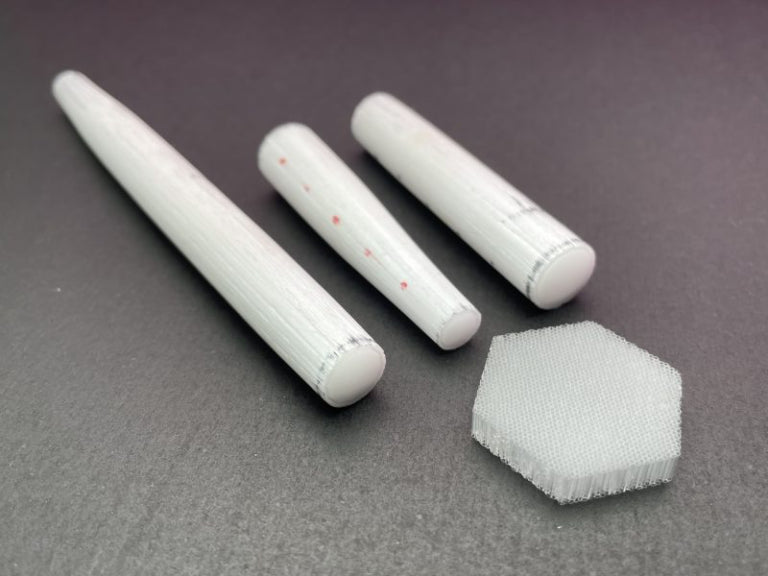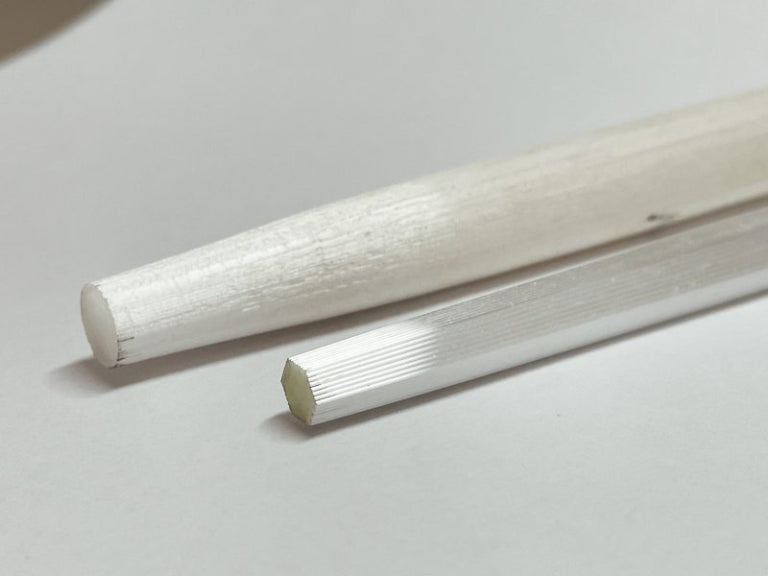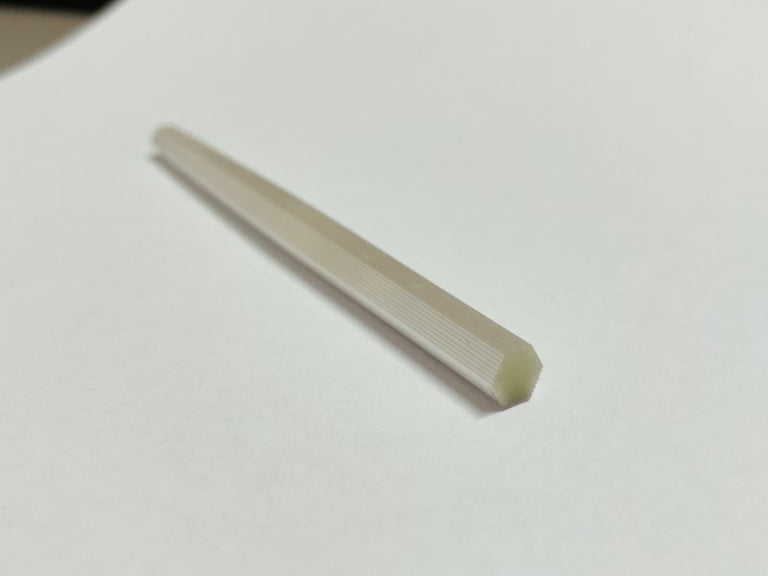SZPHOTON
Polycapillary Optics (PO)
Polycapillary Optics (PO)
Couldn't load pickup availability
Polycapillary optics are arrays of small hollow fibers. X-rays are guided down these curved and tapered tubes by multiple reflections in a manner analogous to the way fiber optics guide light. They differ from single-bore capillaries and X ray mirrors in that the focusing or collecting effects come from the overlap of the beams from thousands of channels, rather than from a few surfaces.
Generally, this results in relatively efficient collection, especially from large divergent sources such as conventional X ray tubes, but does not produce submicron beam spot sizes.



Specification
-
Channel Diameter
- 10um
- 20um
-
Channel Wall Thickness
- 0.5 - 2um
-
Channel Geometric
- Hexagonal
- Circular
-
Open Area Ratio
- Above 65%
-
Material
- Borosilicate glass
-
Type of PXO
Focusing / Collimating
How to order
The product is still experimental, final result may vary from designed value. And we need below information to proceed an order.


Comparison
- Polycapillary optics: Polycapillary optics are a type of x-ray optics that uses a series of small, closely spaced cylindrical lenses to focus X-rays. They have a high resolution and intensity, and are widely used in x-ray crystallography, medical imaging, and industrial inspection.
- Single crystal or crystal monochromators: Single crystal or crystal monochromators use a single crystal, such as silicon or diamond, to diffract the X-rays into a specific wavelength. They have a high resolution, but a lower intensity compared to polycapillary optics. They are widely used in x-ray diffraction and x-ray fluorescence analysis.
- Mirrors: Mirrors can also be used to focus X-rays. However, mirrors are not as efficient as polycapillary optics or crystal monochromators, and they typically have a lower resolution and intensity. They are widely used in X-ray telescope and X-ray imaging.
- Zone plates: Zone plates are similar to polycapillary optics, but instead of using many small lenses, zone plates use a series of concentric circles to diffract the X-rays. They have a high resolution and intensity, but they are not as widely used as polycapillary optics or crystal monochromators.
- Grazer: Grazing incidence optics (Grazer) is another method that uses a combination of a mirror and a crystal to focus X-rays. Grazer have a high resolution and intensity, but they are not as widely used as polycapillary optics or crystal monochromators.
- Compound refractive lens: Compound refractive lenses (CRLs) are another type of focusing optics that use multiple lenses made of refractive materials to focus X-rays. They have a high resolution and intensity, but they are not as widely used as polycapillary optics or crystal monochromators.
Each method has its own advantages and disadvantages, and the best method to use depends on the specific requirements of the experiment or imaging, such as resolution, intensity, and wavelength range needed.
Applications
Polycapillary optics are used in a variety of machines, including x-ray diffractometers, x-ray fluorescence spectrometers, and computed tomography (CT) scanners.
In X-ray diffractometers, polycapillary optics are used to focus and collimate the x-ray beam, which improves the resolution and sensitivity of the instrument. They are also used to increase the intensity of the x-ray beam, which allows for faster data collection and smaller samples.
In X-ray fluorescence spectrometers, polycapillary optics are used to focus the x-ray beam onto the sample, which increases the intensity of the fluorescent x-rays emitted by the sample. This improves the sensitivity and accuracy of the instrument.
In computed tomography (CT) scanners, polycapillary optics are used to focus the x-ray beam onto the detector, which increases the resolution and contrast of the images produced by the scanner.
In addition, polycapillary optics are also used in other equipment like in X-Ray imaging, X-ray Fluorescence(XRF) analysis, X-ray diffraction(XRD) analysis, X-ray crystallography, Non-destructive testing, Medical imaging and many more.



